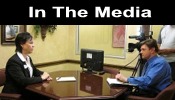As an avid amateur radio operator and a Texas Real Estate Broker, I’m often asked to speak about the impact of CC&Rs and HOAs on Amateur Radio. The following is an outline of a presentation I made this evening for the McKinney Amateur Radio Club in McKinney, Texas.
 Overview
Overview
– Definitions
– Before you Purchase a Home
– Dealing with CC&Rs and the HOA
– Stealth Ideas
Definitions
CC&Rs: Covenants, Conditions, and Restrictions. The more common name is “deed restrictions.” This is a legal document that is filed with the County Clerk. It establishes minimum building standards, specific use restrictions, and often establishes the Homeowner’s Association. You can get copies directly from the County Clerk. Many counties now have their records online and unofficial copies can be downloaded. If you are working with a real estate professional, they should also be able to get copies. CC&Rs may be enforced by other homeowners or by a properly established Homeowners Association.
HOA: Homeowners Association. This organization is typically authorized by the CC&Rs. The developer usually initiates the HOA and turns it over to the homeowners at a time specified in the CC&Rs. Membership and dues may be mandatory or voluntary, but typically they are mandatory so the HOA has the funding needed to carry out its objectives. While HOAs can have many committees with various powers, the most important one in respect to amateur radio is the Architectural Control Committee also known as the ACC. The ACC usually has broad power to approve or disapprove any request for improvements or changes to properties located in the subdivision.
Neighborhood Association: This is a social organization that has no real authority. They usually do not charge dues or they are voluntary. They cannot enforce CC&Rs and cannot have an ACC.
Before You Purchase a Home
Do Your Research – This is the most critical step of the process. The last thing you want to find out is that there is an undisclosed HOA or that the existing CC&Rs will not allow you to put up an antenna or operate.
– Few real estate agents specialize in amateur radio. This is the primary reason I founded Homes4Hams.com in 2002
– You can get copies of the CC&Rs from the county to do your own review or
– You can hire an attorney to do it for you
Dealing with CC&Rs and the HOA
If you already live in an area with CC&Rs and/or and HOA, get copies of the CC&Rs and HOA governing documents. These documents outline the restrictions and establish how the HOA or ACC operates.
– Many CC&Rs give the HOA/ACC a fixed period of time to render a decision. If they fail to do so, the project is considered to be approved. Once again, read the CC&Rs and HOA documents for specifics. If there is an HOA/ACC, file a request for approval of your project. You might try applying for something simple to see if they will respond before trying for the tower and yagi
– If there are CC&Rs but no HOA, you still need to know if tower and antennas can be erected. Just because there is no HOA does not mean there are no restrictions. Any homeowner subject to the CC&Rs could file suit against you if you violate the CC&Rs
Stealth Ideas
Just because you inadvertently moved into a home with CC&Rs does not mean you cannot operate if you do so smartly. Use stealth antennas and use low power.
Apply for a Flagpole – Most HOAs will not deny such a request. Force 12 has a commercial antenna flagpole available. I have used 18 feet of 2-inch aluminum tubing disguised as a flagpole with an SGC-230 auto tuner. WAS, WAC, and DXCC were worked in less than 9 months mostly on 40 meters. The SGC-230 will load the 18 foot “flagpole” on 80 through 10 meters. If you can get 24 feet of flagpole, the SGC-230 will load it on 160 meters as well. Use a many ground radials as possible.
Wire Antennas – Use wire antennas strung along the tops of fences. I’ve run large loops and long wire antennas along the tops of fences. While these could be cut to a single band, use the SGC-230 at the feed point for all band coverage. DXCC, WAS, and WAC were worked in less than a year.
Try Satellites – I put up M2 Eggbeaters for 2 meters and 440 MHz on the back side of my home (away from the view from the street). The HOA did send me a notice but I claimed an OTARD exemption and never heard from them again.
Remote Operations – You could purchase land in the country and set up a station that could be operated on-site or from a remote location. One ham in Austin was tired of fighting with the HOA. He went out east of Austin and purchased a hilltop where he installed 190 feet of rotating tower and yagi antennas for 80 through 10 meters. He could operate on-site or control it all from his home to chase DX or rag-chew. This was several years ago and the technology for remote control and operation has improved dramatically.
Summary
If you are purchasing a home and want to put up antennas, do your research before you sign a contract or make sure there is verbiage in the contract that lets you terminate the contract if your research shows that you will not be able do what you want to do
If you already live in an area with CC&Rs, get copies of the governing documents and know the rules.
Realize that you can still operate HF by using stealth antennas and low power.
73,
![]()
Tom Branch, K4NR, holds an Extra Class Amateur Radio License. He has numerous awards including ARRL A-1 Operator, DX Century Club (325 confirmed countries), and 5 Band Worked All States. He has been published in QST, The Journal of the American Radio Relay League. Tom founded Homes4Hams in 2002 to help amateur radio operators connect with knowledgeable real estate professionals.


